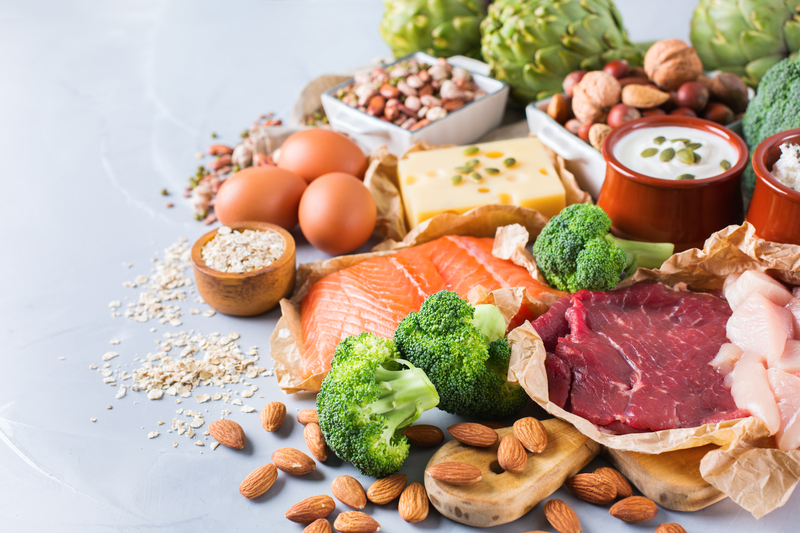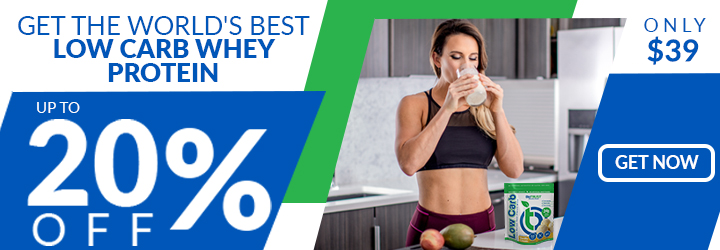The 11 Best Foods for Building Muscle After 50

If you don’t want to experience sarcopenia (muscle loss) and you’re over 50, then you might want to add these foods for building muscle to your diet plan. There’s no magic trick to building muscle over 50, but there are some things you can do to help yourself, and we’re giving you the details here.
What Is Sarcopenia, and Why Is It Happening to Me?
Sarcopenia is a scary-sounding term that simply means loss of muscle tissue as we age. While there are varying degrees of sarcopenia, losing muscle mass is never a good thing. Muscle helps you walk, stand, turn, bend, balance, and do everyday activities. It keeps your body strong and allows you to go through your daily activities with ease. So, keeping what you have is vitally important.
While you can certainly start to lose muscle earlier in life if you’re not active, typically, you won’t start to notice it until after you pass your 50th birthday. And if you don’t start eating appropriately for muscle retention and exercising on the regular, you’ll continue to progressively lose muscle mass with every passing year.
That said, you don’t want to play catch up with your muscle mass. You want to keep what you have while building new muscle. How do you do this? To build new muscle tissue (to counteract what you would normally lose over time), you have to actively work on doing resistance training type exercises and eating the right foods to build muscle.
Best Foods for Building Muscle
So, what types of foods will help you keep your muscle and build more of it? A diet filled with whole, natural, healthy foods is a great start. Add to that a nice, constant supply of quality protein, and you’re off to the races. The most important foods for building muscle mass will be lean proteins.
How much protein should you get on the daily?
Well, there are different schools of thought. The Recommended Dietary Allowance (RDA) for protein is only 0.8 grams of protein per kilogram of body weight. That’s the very least amount of protein you should get. However, studies show that adults over 50 need at least twice that amount to maintain and build muscle. And, according to the International Society of Sports Nutrition (ISSN), those who practice regular resistance training more likely need between two and three grams of protein per kilo of body weight. This is where eating the right foods really comes into play.
So, the minimum amount is 59 grams for an average (162-lb) woman and 72.5 grams for an average (200-lb) man. The recommended amount for those same people over 50 would be 118 grams for women and 145 grams for men. And for those same people, the ISSN recommends a range of 147 to 220 grams for women and 181 to 272 for men.
How can you get muscle-friendly quality protein sources into your diet? Include foods from the following sources:
1. Poultry
This is often a staple in a healthy protein-rich diet. Just one 3-oz serving of chicken has over 25 grams of protein—a great start to fulfilling your protein needs for the day. And don’t forget about turkey, a wonderful low-fat, very high-protein, delicious food option.
BREAKING: Forget Taking Collagen, Try This 21-Second Trick for Healthier Skin & Hair Instead
2. Fish
Yes, you can have fatty fish like salmon for high protein and healthy fats. Or, you can stick with lower fat fish like tilapia if you’re keeping things tight or just want a bit more variety. Fish is very high in protein and also provides the fatty acids your body needs. In addition to salmon and tilapia, some of the best choices include cod, herring, sardines, mackerel, mahi-mahi, perch, rainbow trout, striped bass, tuna, wild Alaskan pollock, and artic char. Depending on the fish, a four-ounce serving provides around 18 to 33 grams of protein.
3. Beans
Yes, plants and veggies can contain protein, too! Try all different kinds of beans to get about 15 grams of protein per cup. Beans are high in fiber, too!
4. Brown Rice
And if you’re eating beans and you want to round out your meal to form a complete protein, you can add rice to the mix. At six grams of protein per cup, it will help you meet your protein needs.
5. Protein Powders
Often found in dessert-like flavors, protein powder is a convenient protein option that travels well and can give you a quick boost of protein when you don’t have time to make and eat a full meal.
Different types of protein powder provide different amounts of protein. BioTRUST Low Carb, for example, provides 24 grams of grass-fed protein from pasture-raised cows. BioTRUST Low Carb Lite™ comes in at 20 grams of quality whey protein isolate from grass-fed dairy. Ageless Multi-Collagen® has 10 grams. And BioTRUST Low Carb Plant™ offers 20 grams of high-quality protein from pea and Sacha Inchi.
6. Dairy Products
Cottage cheese, Greek yogurt, yogurt, cheeses all contain protein, and most have slower digesting proteins in them and often have both slower and faster digesting proteins. This makes foods like Greek yogurt the perfect bedtime snack. But, beware, not all dairy is low in sugar, so watch for additives and read labels and eat accordingly!
7. Eggs
Containing both healthy fats and protein, eggs are a great way to boost your protein intake. If you’re watching your fats though, be aware of the fact that eggs have five grams of fat in each yolk. You might try using one or two whole eggs and then rounding out your meal with just egg whites if you’re really trying to cut back on calories. But, there is good reason to eat the whole egg.
8. Pork
The “other white meat” is also a great source of lean protein (when trimmed). At 23 grams of protein per serving, it’s a great addition to your muscle-building foods list.
9. Quinoa
This grain has about eight grams of protein per cup with lots of fiber and a steady source of carbs. A superfood, you’ll want to include this in your muscle-building foods list.
10. Lean Beef
You’ll want to keep your beef lean if your goal is to stay lean yourself. Beef can have a lot of fat, which means it’s also higher in calories, so read labels and choose the leanest varieties and cuts. Beef also contains creatine, which is proven to support muscle growth.
11. Nuts
Last, but not least, nuts are delicious and satisfying (due to their high fat content and crunch factor) and also pack six or more grams of protein per serving. Watch portion sizes, though, as the higher fat content can make them calorie-dense. Although healthy fat, it can derail a lower calorie diet pretty quickly. So, eat smart.
If you prefer a plant-based diet, you still have a lot of healthy options to choose from, such as pumpkin seeds, spirulina, tofu, legumes, lentils, and more.
At the end of the day, our bodies continue to change as we age. Staying strong, healthy, and self-sufficient is going to require strong, healthy muscles. Combine regular strength training (three or more times a week) with the proper foods for building muscle and just watch what your body can achieve. Doing what you can now, by eating the right foods for building muscle and continuing building muscle over 50 and beyond, will help protect you from age-related muscle loss, which can in turn help you live longer. It’s never too late to get started on the right path!







